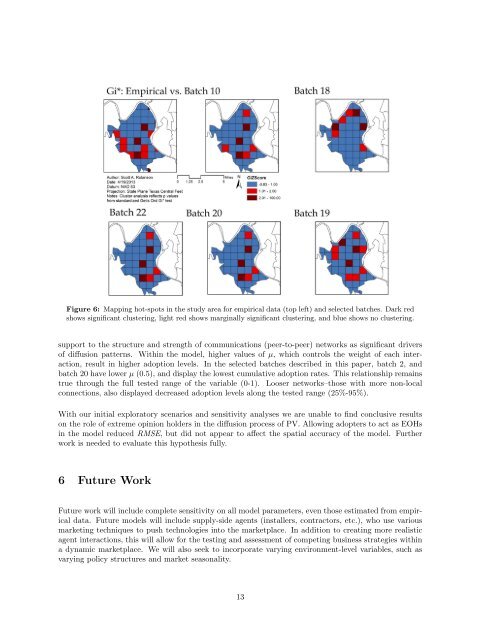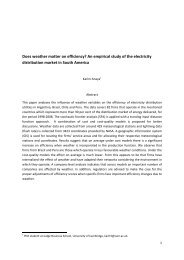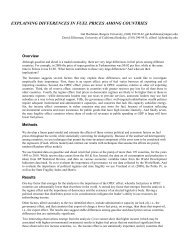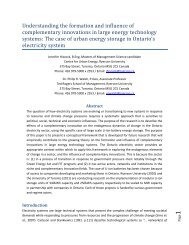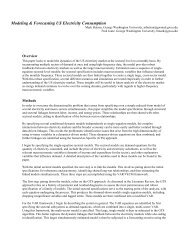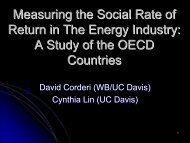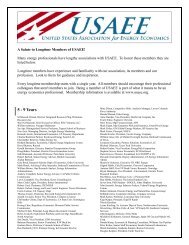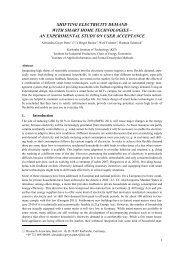GIS-Integrated Agent-Based Model of Residential Solar PV Diffusion
GIS-Integrated Agent-Based Model of Residential Solar PV Diffusion
GIS-Integrated Agent-Based Model of Residential Solar PV Diffusion
- No tags were found...
You also want an ePaper? Increase the reach of your titles
YUMPU automatically turns print PDFs into web optimized ePapers that Google loves.
Figure 6: Mapping hot-spots in the study area for empirical data (top left) and selected batches. Dark redshows significant clustering, light red shows marginally significant clustering, and blue shows no clustering.support to the structure and strength <strong>of</strong> communications (peer-to-peer) networks as significant drivers<strong>of</strong> diffusion patterns. Within the model, higher values <strong>of</strong> µ, which controls the weight <strong>of</strong> each interaction,result in higher adoption levels. In the selected batches described in this paper, batch 2, andbatch 20 have lower µ (0.5), and display the lowest cumulative adoption rates. This relationship remainstrue through the full tested range <strong>of</strong> the variable (0-1). Looser networks–those with more non-localconnections, also displayed decreased adoption levels along the tested range (25%-95%).With our initial exploratory scenarios and sensitivity analyses we are unable to find conclusive resultson the role <strong>of</strong> extreme opinion holders in the diffusion process <strong>of</strong> <strong>PV</strong>. Allowing adopters to act as EOHsin the model reduced RMSE, but did not appear to affect the spatial accuracy <strong>of</strong> the model. Furtherwork is needed to evaluate this hypothesis fully.6 Future WorkFuture work will include complete sensitivity on all model parameters, even those estimated from empiricaldata. Future models will include supply-side agents (installers, contractors, etc.), who use variousmarketing techniques to push technologies into the marketplace. In addition to creating more realisticagent interactions, this will allow for the testing and assessment <strong>of</strong> competing business strategies withina dynamic marketplace. We will also seek to incorporate varying environment-level variables, such asvarying policy structures and market seasonality.13


